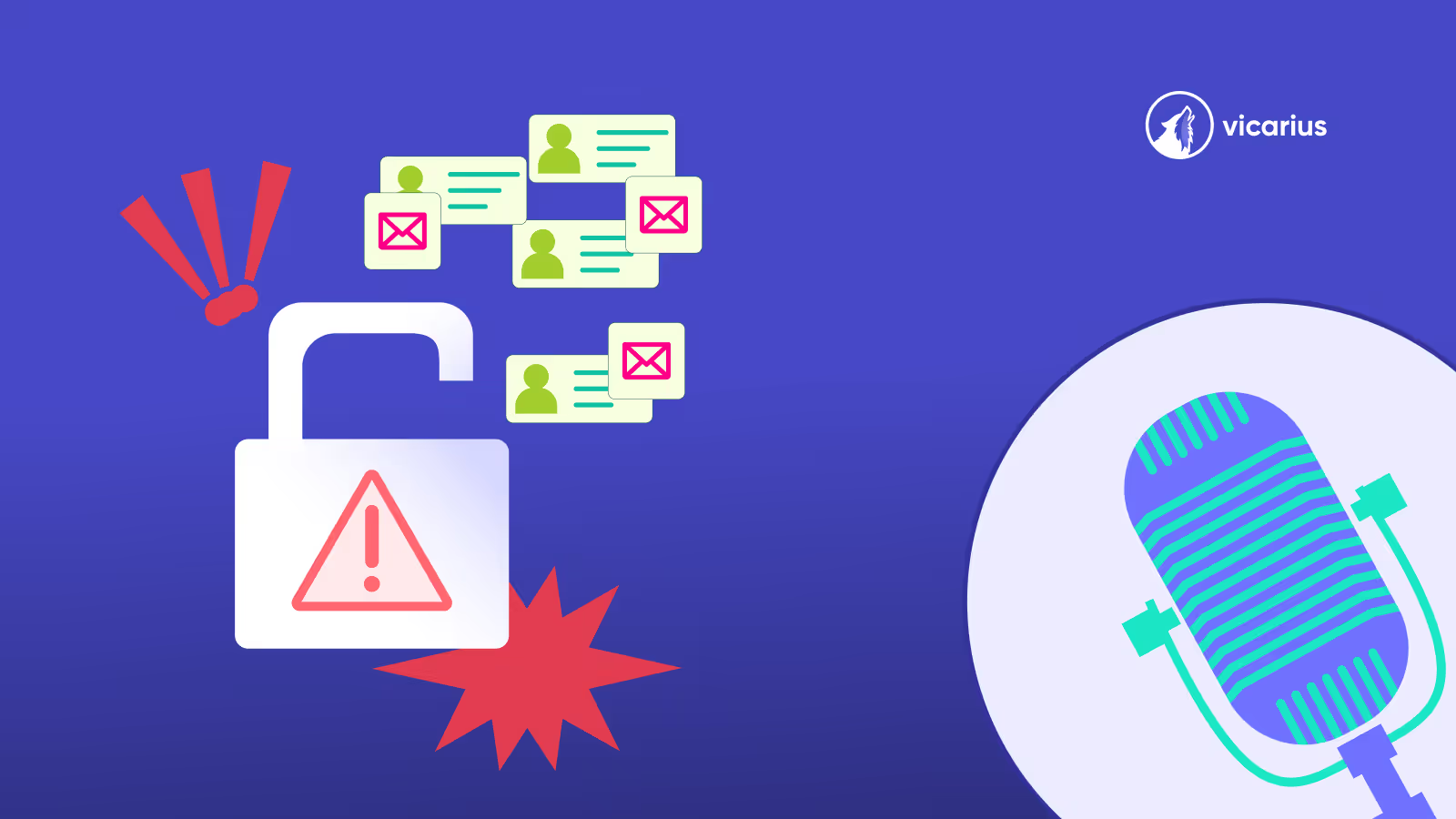
James: Welcome to a deep dive into something genuinely transformative in the world of cybersecurity. We're really not just talking about a new checklist here. We're exploring a fundamental shift in how organizations secure their digital landscapes. Our focus today is Executive Order 14306, issued by the White House back on June 6, 2025. And look, this isn't just another government directive. It feels different. It's a formal an undeniable pivot, moving away from sort of trial phase initiatives to really enforceable concrete expectations for federal systems, sure, but also for any private entities connected to them. It feels like a pretty big deal.
Katie: It is a big deal. And what's truly noteworthy, I think, is how the goalposts have moved. Even if the deadline itself feels like it's already here for compliance, this order, it signals a shift away from the static reactive checklist we're used to and much more towards an ongoing, measurable, and sort of continuous dance of implementation. So yeah, we're going to unpack what this means for you, whether you're a vendor, a security pro, or maybe just someone trying to navigate this digital world.
James: Right, and we'll explore how this order is like accelerating the adoption of AI and automation in cyber. How it redefines software supply chain security, that's huge. Plus sharpening focus on foreign thread vectors and even tackling security for IoT devices, cloud and space systems too. So our mission today is really to equip you with the key takeaways from this shift, helping you understand not just what happened, but maybe more importantly, why it matters and what it implies for the future. Okay, let's get into it. So first off, What's the fundamental change here with EO 14306? It really sounds like more than just adding a few new rules.
Katie: Oh, it absolutely is. Yeah. The order consolidates and reframes things. Some previous key programs shelved, attestations that were maybe one and done, paused. The focus has just decisively shifted from that reactive hardening, you know, where you tick boxes after a system was built. to proactive, auditable security controls baked in. For a lot of organizations, this means integrating Secure by Design much earlier, deeper, embedding automation, embedding remediation throughout the whole life cycle. It's not just proving compliance later. It's about continuously demonstrating actual risk reduction.
James: OK, so less about proving it didn't fail after the fact, more like showing it never failed to begin with, like continuous assurance. That feels like a massive mindset change.
Katie: But that's precisely it, continuous real-time assurance. That's the new standard, which brings up the big question, how do organizations actually adapt to this, this demand for continuous demonstrable security, especially when you're trying to prevent failure before it even happens?
James: Yeah, good question. And, you know, we've heard so much about AI in cybersecurity. Sometimes it feels like just a buzzword. But this order actively endorses using it. So practically, what's the real driver for pushing AI now beyond the hype?
Katie: Necessity. Simple as that, really. Sheer necessity. The order basically acknowledges that the volume, the velocity of modern threats, It just swamps what manual teams can realistically handle. Think about it. Security pros trying to keep up across these huge complex environments. It's overwhelming. So AI isn't a magic bullet, no. But it's essential now. An accelerator for risk production helps with exposure management, better asset discovery, supports behavioral baselining, figuring out what normal looks like so you spot the weird stuff faster. And yeah, flagging anomalies with way more precision than humans alone could manage.
James: OK, that makes sense for detection. But here's where I get really interested. How does AI help with action, like actually doing something about the problems, not just flagging them?
Katie: Right. The action part is key. When you integrate AI into remediation platforms, it allows for dynamic prioritization. And it can actually initiate patching or mitigation without waiting for a human to click Go. Imagine, like, an AI correlation engine sees a vulnerable service acting weirdly, and bam, it triggers workflows to isolate the endpoint. or kill a process. This stuff is already happening in high-performing places, especially for MSPs. Where that immediate context-aware response across different clients is just non-negotiable. It's about moving from a human analyzing thousands of alerts to automated preemptive action. Wow.
James: That sounds incredibly powerful. Almost. Yeah. Bit futuristic. But doesn't that level of autonomy raise concerns? Or control? Unintended consequences, maybe. How do we manage that?
Katie: That's a really crucial point. And yes, integrating AI tooling needs care. Serious care. Teams need to focus on systems that offer transparency. Configurability and, importantly, native integration with what they already have. Automation has to be controllable. The outcomes need to be measurable and you need to limit false positives through clear policies, right? If you do it right, AI stops being just another layer of complexity. It becomes a real partner in reducing your actual attack surface, providing smart guardrails, not just dumb roadblocks.
James: OK, guardrails make sense. So building on that proactive idea, the order also seems to redefine how we secure the actual building blocks of software. Let's dig into that software supply chain security. It's moving away from static checks. What does that mean for, say, developers?
Katie: It means security has to be automated, embedded, continuously enforced all the way through. The static attestations, the one-time scans, not enough anymore. Developers, CICD architects, security engineers, they're now expected to bridge that gap between secure by design and secure in production by building security validation right into the pipeline itself.
James: OK. And I keep hearing about SBOM's software bills of materials. How do they fit into this continuous model? Are they just more paperwork?
Katie: No, definitely not just paperwork. Think of them as living documents, dynamic, auditable, almost like the DNA of your software. They give you that crucial traceability, accountability for all those third party open source bits in your code. And that lets you monitor component risk in real time. It enables automated policy enforcement because you know what's inside. You can prove it.
James: And what about actually automating the fixes, like within the development process itself? Can we really stop vulnerabilities before they even get out the door?
Katie: Yeah, we can get much closer to that. Security tooling that plugs right into CICD platforms, it allows vulnerabilities to be spotted and ideally fixed before the code hits production. Things like automated dependency updates, fail fast testing. Fail fast. Yeah, like it immediately stops the build if a critical vulnerability pops up, like a quality check that won't let a bad part go down the assembly line. And even rollback mechanisms if a patch turns out to be unstable. All this stuff demonstrably cuts down developer headaches and improves security. And beyond that, anomaly detection tools are critical too. They can flag suspicious behavior, weird versioning, metadata drift in packages.
James: Like subtle changes?
Katie: Exactly. Subtle changes in the digital fingerprints that might mean tampling that should at least trigger a quarantine or block a release until someone checks it out.
James: That's a strong framework for the inside. But what about outside threats, especially across borders? The EO has some pretty strict new expectations there, foreign threat vectors. What does this mean for, let's say, the MSP supporting clients all over the world?
Katie: It means cross-border risk is now viewed as an exposure itself, needs managing. The order lays out strict new expectations, not just about where your servers are, but critically where they're controlled from and who can access them. So restricting foreign data access, ensuring software provenance, controlling telemetry, it's all in there. MSPs especially have to factor this in now. Geopolitical risk becomes a technical control.
James: Wow. So things like geofencing, restricting access based on IP location, that's essential now, not just nice to have.
Katie: Absolutely essential. Jurisdictional controls like geofencing, IP reputation scoring, tight access policies, They've gone from optional extras to core requirements. In some cases, these controls can even dictate procurement eligibility, especially if you're supporting sectors under sanctions or national security rules.
James: In real time, how do we mobilize if a threat pops up from a flagged region?
Katie: Well, threat intel based on origin is only useful if you can act on it fast. So by integrating with your SIEM, your SAR platforms, teams can set up automated actions, shut down sessions, revoke credentials, escalate alerts. When traffic comes from flagged regions or known bad actors, the aim is containment, fast containment. But, and this is important, that automation needs to be tunable. You need those guardrails we talked about, not just hard stops. You need ways to handle exceptions, allow for secondary reviews, for legitimate remote access, for cross-border teams. The automation has to support the business, not break it.
James: Okay, let's shift gears a bit. The Internet of Things, IoT. The order mentions the SCC cyber trust mark. Sounds like a big new regulation layer. What impact is that likely to have?
Katie: Yeah, the FCC cyber trust marks. Starting 2027, it's a major shift, a really big one. Federal buyers and likely many adjacent industries will start requiring this certification for IoT devices. It basically sets a uniform baseline for updateability, secure defaults, lifecycle transparency across what is, let's face it, a hugely fragmented landscape right now. Think of it like a nutrition label for device security.
James: A nutrition label. I like that. But how do organizations manage compliance? You could have thousands of these devices, all different. Manual inventory seems impossible, like counting sand.
Katie: Exactly. It is impossible at scale and incompatible with compliance. So meeting these standards means building automated discovery and classification right into the network. Security teams need to be able to find every connected device, check its firmware status, validate if it meets those trust rules, manual inventory, just not efficient, not effective enough, and patching IoT notoriously hard, right? Fragmentation, inconsistent vendor support.
James: Yeah, a nightmare.
Katie: Right. So successful programs will lean heavily on non-intrusive, over-the-air updates. Plus fallback firmware states, so things don't just break if an update fails. Platform agnostic tools are key here. And segmentation is still absolutely essential. Devices that fail validation. They need to be isolated from critical systems, put in monitored segments, or just removed. The goal isn't maybe perfect to 100% compliance on day one. It's continuous, automated enforcement, managing that attack surface.
James: Okay, another huge area, the cloud. How does EO 14306 hit cloud services, especially those supporting federal work, but by extension probably loads of private companies too?
Katie: Well, FedRAMP alignment, that's the government's cloud security standard, is now mandatory for federal workloads. And this changes the game for misconfigurations. What used to be maybe an operational oofsy is now a serious compliance issue. So for MSPs, platform engineers, infra-architects, policy has to be codified, enforced through code, and continuously monitored all the time.
James: So tools like cloud security posture management, CSPM, they're not just best practice anymore. They're like basic hygiene.
Katie: Exactly. Foundational hygiene. Real-time scanning from CSPM tools helps catch violations. Against FedRAMP controls, sure, but also against your own internal policies. Things like finding and closing public S3 buckets, flagging excessive IAM permissions like wildcard roles, enforcing encryption between services, all that stuff. It's about making sure every corner of your cloud setup meets those strict security baselines. And when you think about critical space systems, same deal. Securing ground control, comms links, telemetry data, all need similar rigorous automated posture management.
James: And how do we ensure things are secure right from the start when building in the cloud? Prevent issues cropping up?
Katie: Infrastructure as code is huge here. Managing infra through code, not clicks. Then you apply policy as code to tools like Terraform, CloudFormation, Kubernetes manifests to reject misaligned configurations right at commit time before they ever get deployed.
James: Scoupping it early.
Katie: Precisely. Then automated remediation keeps that posture strong over time. It detects drift, automatically reapplies the known good settings, logs what it did, and escalates if needed.
James: Okay, so pulling this all together, what does it mean for us really? This EO sounds like way more than just new rules. It feels like a foundational shift demanding a different kind of maturity.
Katie: It absolutely is a pivot point towards sustained operational maturity. Instead of just relying on those audit checklists, it asks organizations to demonstrate continuous, demonstrable, effective risk reduction. And this shift strongly favors teams that can automate not just detection, but remediation too. It's about building security that's fundamentally more resilient, more proactive, something that can actually keep pace with threats today.
James: So it really boils down to taking action, closing the loop, not just getting alerts and staring at a dashboard, hoping someone gets to it.
Katie: Precisely that. For so many teams, the visibility is already there. They see the threats. What's often missing is the mobilization part, the ability to take timely, accurate, low-friction action based on what they see, Manual patching, it just doesn't scale. Not for these new expectations. So automated remediation, native patching, config scripts, memory protection that has to become standard practice. Which means metrics like Mean Time to Respond, MTTR. That's not a luxury metric anymore. It's a leading indicator of your resilience. How fast can you contain and neutralize things?
James: And solutions exist now that are specifically designed to help with this. To help make that shift to automated action.
Katie: Yes, absolutely. There are solutions out there. For example, VRX by Vicarious. It's built specifically to help organizations move beyond just the alerts. They offer automated patching for like thousands of applications, support flexible scripting, and even have something called patchless protection for those tricky, high-risk things you just can't patch easily. The whole approach is geared towards speedy, law of friction remediation across diverse environments. Without necessarily forcing you to rip out everything you already have, it's about making it easier to align with these policies and drastically cut down that threat dwell time.
James: Well, this has certainly been a deep dive. The shifts from Executive Order 13306 are profound. It's really clear the future isn't about isolated tools anymore. It's about a continuous, automated, deeply integrated approach to defense.
Katie: And what's crucial to grasp, I think, is that this isn't just about ticking compliance boxes. It's about building a security posture that's fundamentally more resilient, more proactive, one that can actually keep up with the threat landscape as it keeps changing. It really feels like a permanent step up in security maturity for everyone involved.
James: So what does this all mean for you listening in? Well, for many, it sounds like an urgent call to reassess your current strategies and really look at integrating automation much more deeply, embracing this action-oriented approach.
Katie: Which leaves us with maybe one final thought to consider. A question for you, really. In this new era where automation is becoming mandatory, where machines are taking on more routine work, what does that mean for the human element in cybersecurity? And how do we ensure that effective human oversight, that critical thinking remains absolutely central to our security strategies, even as our systems get smarter and more autonomous?
James: something to definitely think about. Thanks for joining us for this deep dive. We hope you feel a little more well-informed and maybe ready to tackle the complexities of our automated future.









